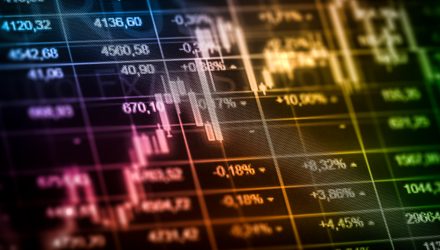In today’s bond market, yield is getting harder to come by, but investors can still use bonds strategically as either a safety mechanism when markets get volatile or a relatively stable source of income. Morningstar released a list of bond funds that included three exchange-traded funds (ETFs) that investors can look at.
“Investors rely on bonds for many reasons: funding short-term goals, providing ballast to an equity-heavy portfolio, or generating much-needed income during retirement, to name a few,” wrote Morningstar’s Susan Dziubinski. “Yet the dizzying array of bond-fund choices can drive an investor to just stick with what he or she may already be familiar with—cash.”
Before diving head first into a bond fund, there are certain things to consider.
“Before getting down to choosing a bond fund, step back and consider why you need one—what role is it playing for you? Once you know what need it’s filling, figure out whether a taxable-bond fund or municipal bond fund is a better choice for you,” Dziubinski said. “If you’re investing via a tax-deferred account like an IRA or 401(k), a taxable-bond fund will be the better match; find out what you should consider before choosing one here. If you’re investing in a taxable account, however, municipal bonds might be the better choice on an after-tax basis. This article can help you determine whether there’s a tax advantage if you take the muni-bond route.”
Here were the three ETFs that made the Morningstar list:
- Fidelity Total Bond ETF (NYSEArca: FBND): seeks a high level of current income. Normally, the fund invests at least 80% of assets in debt securities of all types and repurchase agreements for those securities. It uses the Bloomberg Barclays U.S. Universal Bond Index as a guide in allocating assets across the investment-grade, high yield, and emerging market asset classes. The fund invests up to 20% of assets in lower-quality debt securities. It is managed to have similar overall interest rate risk to the index.
- PIMCO Enhanced Short Maturity Active Exchange-Traded Fund (NYSEArca: MINT): seeks maximum current income, consistent with preservation of capital and daily liquidity. The fund invests at least 80% of its net assets in a diversified portfolio of Fixed Income Instruments of varying maturities, which may be represented by forwards. “Fixed Income Instruments” include bonds, debt securities and other similar instruments issued by various U.S. and non-U.S. public- or private-sector entities. The average portfolio duration of this fund will vary based on PIMCO’s market forecasts and will normally not exceed one year.
- Schwab U.S. TIPS ETF (NYSEArca: SCHP): seeks to track as closely as possible the total return of the Bloomberg Barclays US Treasury Inflation-Linked Bond Index (Series-L). The fund will invest at least 90% of its net assets in securities included in the index. The index includes all publicly-issued U.S. Treasury Inflation-Protected Securities (TIPS) that have at least one year remaining to maturity, are rated investment grade and have $500 million or more of outstanding face value. The TIPS in the index must be denominated in U.S. dollars and must be fixed-rate and non-convertible.
For more market trends, visit ETF Trends.

